3 Reasons A Website Update Goes Over Budget and Over Schedule
There are several inherent problems with traditional web design. One of the biggest stumbling blocks is the reiterative process. A single change starts the process all over again. The adage of 1 step forward and 2 steps backward definitely applies. Another problem is the dormancy of a website. Websites are put on set it and forget mode. We will revisit it next year.
In the meantime, the market has changed and new opportunities exist and the website just sits there.
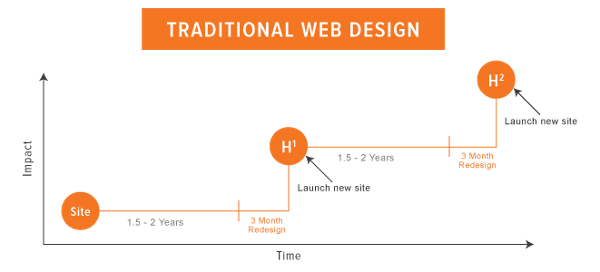
1. Web Developer/Code Dependent
In traditional web design, unless you are experienced in web development and coding you are dependent on someone else to make changes to the website.
Submit a request.
Publish.
Find issues.
Submit another change request.
Wait.
Publish.
A month has now passed! The use of templates that are designed for the end user solve this problem. The coding piece is removed.
Platforms such as Squarepace, WordPress, Wix, GoDaddy and HubSpot offer themed templates for websites. All the coding is done behind the curtain so the end user can add content without any special coding skills required.
2. Lack Of Website Hyperfocus
We need to update our website. Why? Our competitor's sites look better than ours. Reminds me of what my mother used to say to me.” If all your friends jumped off a cliff, would you?” Me being the snarky little ginger that I was would reply “Yes! All my friends would be dead.” Didn’t work well with my mother and won’t work well for your business. It costs money to refresh a website. The lack of a hyper-focus makes your website a cost center, not a revenue generator. If you are going to spend money on your website, then shouldn’t it have a desired outcome and ROI? If all you want is your contact information, then go with a simple contact page. The reality is, most people use the internet to research potential vendors.
Research from Google has shown that 90% of B2B researchers who are online use search specifically to research business purchases.
Average Searches Conducted Prior to Engagement
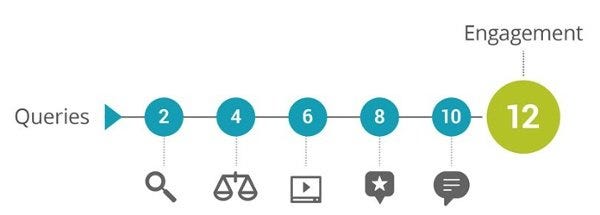
Image Source: Google
A hyper-focused website will solve problems for visitors. Potential customers, when searching the internet for vendors, want to understand your capabilities and unique value proposition to solve their problem so they can move forward in the buying process. This is why it is important to understand your customers using Buyer Personas. Once identified, you can provide highly relevant hyper-focused content that will lead them through the buyer’s journey.
Pro Tip: Ask your current customers what they want to see on your website.
3. Ignoring Low Hanging Fruit
While a cool digital online tool seems like a nice addition, they can be expensive to develop. Focus on low hanging fruit first. The revenue generated can then be used to pay for the cool digital tools. How do you find low hanging fruit? Identify friction points in the conversion process with Google Analytics. An easy way to do this is to set up goals in Google Analytics. If you have not set goals in Google Analytics read this article.
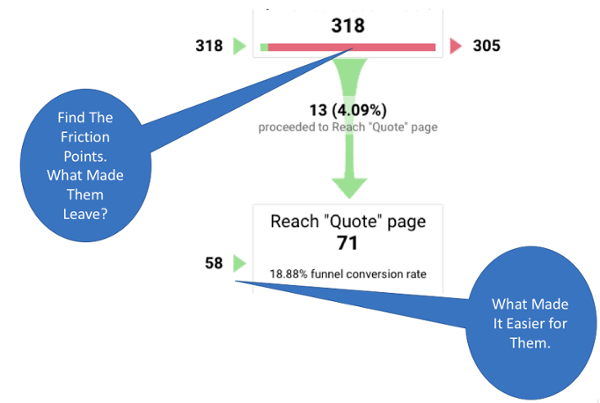
Once you have identified the friction points, design the conversion process so it is easy for your website visitors to get the information they need. Solve the problem. Don’t be the problem.
Your WebsiteA 24 HOUR SALES FORCE THAT NEVER TAKES A VACATION!
Here are some enlightening facts from Google:
- 90% of B2B researchers who are online use search specifically to research business purchases.
- On average, B2B researchers do 12 searches prior to engaging on a specific brand’s site.
- 71% start on a generic query, so they’re looking for product first, not for you.
- Seventy percent of B2B buyers and researchers are watching videos throughout their path to purchase.
This makes it clear that your website is most likely the first “salesperson” consumers will talk to in their buying journey. Building your website around this data will provide consumers with a positive experience with your brand.
Your “salesperson” needs to have answers as to why you can solve the problems that consumers are researching.

A website update every 18–24 months is obsolete thinking. We view your website as a living and breathing organism that is always in a state of evolution.
That is why we became a Growth- Driven Design certified HubSpot Partner.
HubSpot conducted a survey in 2016 and found only 42% of marketers make impactful improvements to their website every year. We get it. Coordinating Developers and Coders, Graphic Designers and copywriters can become a nightmare.
Traditional Web Design: Waterfall
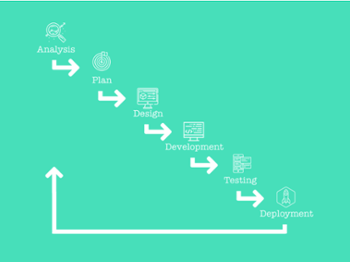
We use the HubSpot Growth Driven Design model for a website refresh.
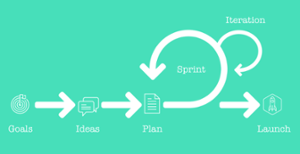
It is based on agile methodology and dramatically reduces the time from concept to launch. It removes the interdependencies of traditional waterfall design: The next process has to wait on the previous process.
Successful websites begin with a focused growth strategy. Our goal in the strategic stage is to develop an empathetic understanding of your audience’s world and how the website can solve problems along their journey.

The goal of the Launch Pad website is to quickly build a website that looks and performs better than what you have today but is not your final product. Your Launch Pad is the foundation from which you collect real-user date and optimize.
The advantage to this approach is we can make changes to your website and make them live with a mouse click. No developers or designers need to be involved.

Analytics That Profit is a HubSpot Certified Agency Partner and a certified Growth Driven Design Agency.


No comments:
Post a Comment